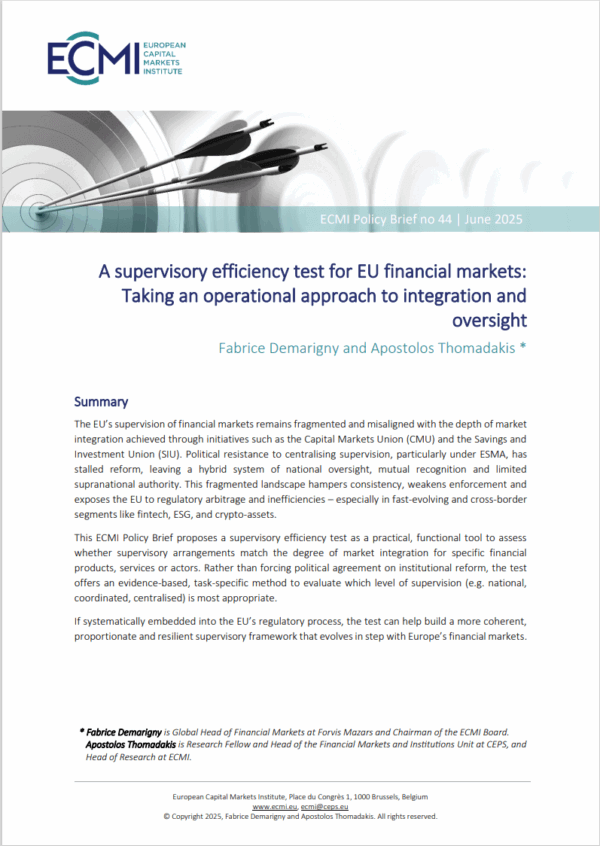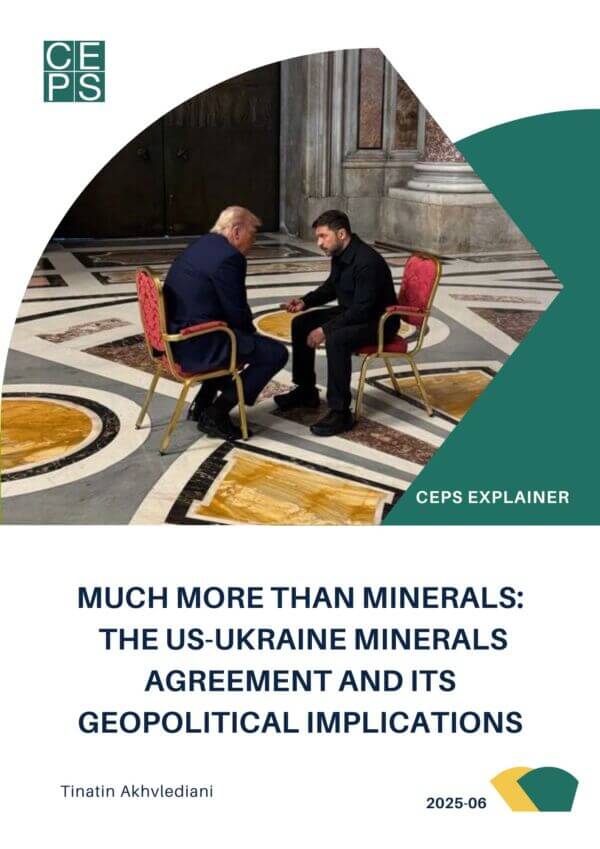Jacques Pelkmans reminds the EU and its WTO partners that trust and the global public good of a rules-based WTO are fragile accomplishments that deserve to be protected, even if the means seem to come from a former imperial age.
Understanding Trump’s decision of March 8th to go ahead and sign up to tariff increases of 25% (steel) and 10% (aluminium) will be very hard for those who tend to approach policy-making rationally. One would normally expect that the objectives of a policy shift as dramatic as this would be properly defined – usually in terms of economic welfare and jobs – and the trade-offs would be assessed carefully. Given the size of the expected direct impact (a cut in US imports of steel by 37% and by 13% for aluminium, representing altogether some $46 billion) and the reliance on a little-used, dubious, highly discretionary and open-ended provision in US trade law (section 232 of the 1962 Trade Act) invoking a threat to national security, which bypasses Congress and gives the President the sole power to end the measure later, the repercussions are manifold. They will almost certainly be turbulent and unpredictable, in terms of the tit-for-tat responses they will provoke from countries hit by these tariffs, and possibly ignite a trade war that will be difficult to control, let alone reverse.
If Trump ever claimed to be a President for all Americans, the tariff decision shows the exact opposite: a careless singular pursuit of a reckless promise to a relatively small group of disgruntled (or indeed unemployed) workers in the rust belt of the US, at considerable cost to the US economy and with unpredictable but undoubtedly serious long-run consequences for world trade and the WTO system, whilst offending and embarrassing allies. Laid-off American workers could have been helped in several alternative but targeted ways, at a fraction of the expected costs of the measures decided on 8 March 2018, and without costly side-effects and without negative repercussions for world trade and the WTO. These tariff hikes across all foreign-country suppliers will, at best, create some jobs in domestic steel (due to a demand shift from outside suppliers to domestic ones), but not many. They will not instigate a modernisation of the US steel sector, which is badly needed. But they will cause a cost increase in numerous US industries using steel (and aluminium), such as cars, construction, defence equipment (together having a large multiple of workers employed compared to steel and aluminium), which, simulations typically show, will prompt job losses far outweighing the artificial job gains in the two protected sectors.
To continue this litany of offences, the tariffs will alienate allies all hit, in different degrees, by these tariffs, including Canada and Mexico (which might escape, but on a blackmail condition of renegotiating NAFTA on Trumps’ terms), the EU, South Korea, Brazil, Japan, Taiwan, Turkey and India. They will inevitably induce retaliation by – sadly – these same allies as they are unlikely to accept the flimsy justification of a threat to US national security (with 3% of US steel output going to defence!) and consider them as ordinary although huge safeguards. Moreover, they will not hit China – seen as the culprit – more than marginally with its 2017 exports to the US in steel of $976 million and $1.8 billion in aluminium, if only because the US steel sector is already protected by a battery of anti-dumping and countervailing duties against China.
Nor will the tariffs do anything to improve the poor and ineffective trade adjustment process for US workers under the TAA (Trade Adjustment Act),[1] which could – when its reforms are well-conceived and implemented – have meant better prospects for numerous workers negatively affected by globalisation. They generate a climate of uncertainty, as IMF Director General Christine Lagarde hastened to warn, in particular because the entire process of preparing the underlying report by the Department of Commerce was deeply shrouded in secrecy, fuelling the suspicion that the decision was a prior imposition from the President and the rationalisation was regarded as an irrelevant nuisance, prompting speculation of what will he think of next and how arbitrary might it be? Moreover, the tariffs might well cause battles in the WTO under dispute settlement, precisely at a time when the US is frustrating the appointment of new Appellate Body (AB) judges. And by 2019, the AB will no longer have a minimum of three members, thereby sinking a most appreciated part of the rules-based WTO system. After this major tariff decision on dubious grounds, the probability of resolving the AB problem has become even smaller.
The utterances of President Trump about the “terrible Europeans”, or Germans, giving a “bad deal” to the US for decades also emerge from an irrational belief that bilateral or even sectoral trade surpluses are somehow caused by “bad deals”. Much has been written about the fundamental drivers of trade surpluses or deficits in the case of the US: essentially macroeconomic determinants (e.g. spending more abroad), complemented by sectoral competitiveness in terms of price, quality, reputation or design. They are therefore first of all US-driven – US deficits begin and end at home – and the sectoral issues are largely a matter of competition on their own merits and not at all of a “deal”. The recent tax package of the Trump administration will exacerbate these structural effects – indeed, the culprit is the very administration that slanders its best allies.
But – given Trump’s assertive and aggressive messaging on the EU’s car exports to the US – it is nevertheless useful to remind the reader of the critical facts on transatlantic economic intercourse in motor vehicles. With respect to tariffs, the US has a low tariff of 2½% for personal cars, whereas the EU levies 10%.[2] Although this discrepancy emerged as a major issue for the Japanese and was also one of the subjects in the TTIP negotiations, the dominant barriers in trade in motor vehicles are regulatory in nature. During the last decade, several studies have attempted to estimate the AVE (ad valorem equivalent) of the costs of discrepancies in regulatory requirements between the US and the EU for motor vehicles, typically a multiple of the tariffs. A CEPR study[3] reports a perceived NTB index by business of 34.8% for EU automotive exports to the US, a little higher than the 31.6 % for US automotive exports to the EU. In the survey of regulatory barriers relevant for TTIP by Berden & Francois (2015),[4] the only other study mentioned with separate estimates for automotive is Egger et al. (2015)[5] with 19.3%-19.5% for both the US and the EU, respectively; however, this only refers to the part of the AVE that can be expected to be negotiated in TTIP. Extremely detailed technical studies on crash tests and other discrepancies in car regulation and conformity assessment between the US and the EU were conducted for TTIP, but without reaching any final conclusion. Nothing in this elaborate work, however, suggested that the Europeans threw up “terrible barriers”, deserving the wrath of the other party. Moreover, it should not be forgotten that the US has major investments in the EU (Ford, Chrysler via FIAT) and several EU car companies have production sites in the US.
The irrationalities of the Trump mind-set risk plunging us all back into a kind of narrow 19th century predicament in which trade and foreign policy were interwoven and global rules were absent, with the powerful having the upper hand. In the age of globalisation, even modest backsliding in that direction is extremely dangerous, not to mention the incipient threat it poses to global value chains. The upshot is that the EU and many WTO partners wishing to promote responsible globalisation must act with the old-fashioned tit-for-tat in firm ways, and otherwise cooperate closely to ‘contain’ Trumpian trade policies. Trust and the global public good of a rules-based WTO are fragile accomplishments that deserve to be protected, even with means that seem to come from a former imperial age. This also implies that the EU should not merely negotiate opt-outs or a full exemption of the announced US tariffs on steel and aluminium. Action in the WTO and determined coordination with trade partners is just as critical, so as to nip in the bud this erosion of the rules-based system.
Jacques Pelkmans is Senior Research Fellow at CEPS.
CEPS Commentaries offer concise, policy-oriented insights into topical issues in European affairs. As an institution, CEPS takes no official position on questions of EU policy. The views expressed are attributable only to the author and not to any institution with which he is associated.
© CEPS 2018
[1] See Jeanne Metivier, Mattia di Salvo and Jacques Pelkmans, “Transatlantic divergences in globalisation and the China factor”, CEPS Policy Insights No. 2017/19, CEPS, Brussels, May 2017, for a comparison of the protection of EU workers and US workers losing jobs due to globalisation or more generally. The TAA provides low and only selective protection, and this in a context of a very weak welfare state in the US, whereas in Europe, the welfare state typically provides a much greater degree of certainty of income for a longer period. See also the plea by former US Commerce Secretary Penny Pritzker on www.cnbc.com of 3 March 2018.
[2] There is also ample trade, both ways, in components and parts at lower tariffs. Much of this trade is intra-firm trade across the Atlantic.
[3] J. Francois et al. (2013), Reducing Transatlantic barriers to trade and investment, paper prepared for the European Commission, March, Brussels; this study was used as the basis for the Commission’s Impact Assessment when formally proposing to initiate TTIP.
[4] K. Berden and J. Francois (2015), “Quantifying Non-Tariff Measures for TTIP”, in D. Hamilton and J. Pelkmans (eds), Rule-Makers or Rule-Takers? Exploring the TTIP, Brussels and London: CEPS and Rowman & Littlefield International.
[5] P. Egger, J. Francois, M. Manchin and D. Nelson (2015), “Non-tariff barriers”, Economic Policy, Vol. 2.












